Looking for GE washer troubleshooting? Most homes now have washers, but most people are unaware of their true functions. In the end, they’re merely laundry machines that, in some ways, make life simpler.
GE is one of the most well-known manufacturers and produces a huge variety of home appliances.
These washers can collapse in a variety of ways, and even if some of their reasons are more obvious than others, it’s essential to figure out how to fix them whenever they start acting weird.
If somehow the washer isn’t operating properly for any reason, check to see if it’s connected to a working outlet, and then move on to the following troubleshooting steps before opting to repair the parts or contacting a professional.
Some Basic GE Washer Troubleshooting
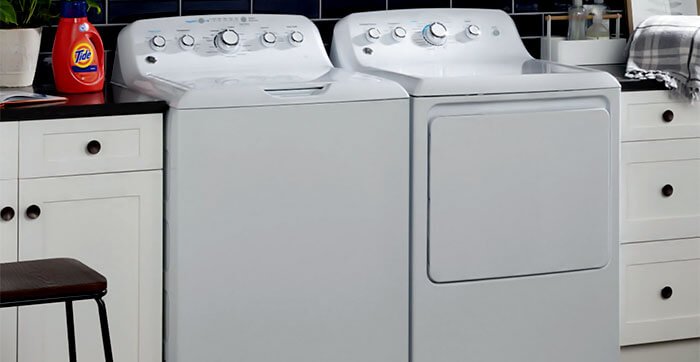
If you’re having trouble with your General Electric (GE) washer, don’t panic. You can often fix the issue quickly and easily without calling for a service technician.
In this blog post, we’ll outline some of the most common issues that arise with GE washers and how to fix them.
The first step in solving any problem is identifying what’s wrong. So, let’s start off by looking at some of the most common symptoms:
- The washer will not turn on or has no power.
- The washer is not properly spinning or agitating.
- Water does not fill the tub and drains slowly.
- Error codes appear on the digital display screen.
Once you know what symptoms you’re dealing with, here are a few simple solutions for each one:
1. If your washer won’t turn on or has no power: Check that the outlet is working by plugging in another appliance; if not, then check your home’s circuit breaker.If both outlets and breakers seem fine, try unplugging and replugging in the washer—this may reset it.
Additionally, check to make sure all hoses are connected correctly (including the water supply).
2. If your washer isn’t spinning or agitating properly: Make sure nothing is blocking the spin basket from rotating freely. such as large items caught between drum paddles or gaskets, and ensure that all connections are secure (like lid switch wire harnesses). Belts should be inspected for signs of wear and tear, such as cracks or loosening strands, and replaced as needed.
3. If water doesn’t fill up the tub or drains too slowly: inspect drain lines for clogs or obstructions by removing them from connection points and inspecting inside for debris buildup; clear away any blockages before reattaching the lines. Additionally, loosen filter screens located near water supply valves to help restore proper pressure levels during filling cycles. Clean out any residue found within the filters using a soft brush before reinstalling them securely in place once more.
4. If error codes appear on the digital display screen: Try restarting your machine by unplugging and replugging the power cord into a wall socket OR using the power on/off and cancel buttons on the control panel. The next time there is a problem, check the code in the owner’s manual guidebook that was given to you when you bought it. It lists the different diagnostic messages and the immediate steps that need to be taken to fix them.
Hopefully, these tips will help get your GE washer running smoothly again!
However, if none of these steps resolve the problem, contact your local service center’s authorized repair technician, who is equipped to handle more complex repairs that may be required in the future!
GE Top Load Washing Machine Troubleshooting
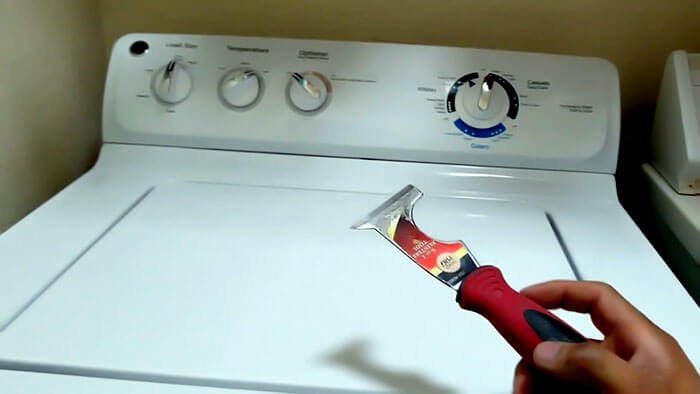
Are you the owner of a GE top-loading washer? Then chances are that you’ve experienced some sort of malfunction at one point or another. Fortunately, most issues with these machines are easy to diagnose and repair.
In this section, I will go over the basics of troubleshooting your GE top-loading washer so that you can get it back up and running in no time!
First off, let’s start by understanding what could be causing the problem. Common issues include:
- Clogged filters or hoses.
- Incorrect water temperature settings.
- Faulty door latch or lock mechanism.
- Defective timer switches or controls.
- worn-out belts or pulleys; broken agitator rods or impellers.
- Blocked drain pump filter screen.
These problems can all lead to an inefficient wash cycle, poor water drainage, and other laundry room mishaps if not properly addressed.
The next step is to identify where the issue stems from. If your washer won’t turn on at all (no lights on display), it may be due to a blown fuse in the main circuit board. Check for any visible signs of damage, such as melted wiring insulation, before replacing it yourself (otherwise contact a professional).
On the other hand, if your washer does power up but fails to begin operation when buttons are pushed, then either a faulty relay will need replacement in the control panel or the timer switch assembly needs attention inside the drum section access hatch area.
The third step is to fix any specific problem from the list above that was found during the initial diagnosis process (or just follow the instructions that came with the appliance).
For example, clogged filters should be checked first because they stop water from flowing into the tub. To clean them by hand, use the brush attachment on a vacuum cleaner, and then reattach them after they are completely dry. Do the same for the hose connections. An incorrect temperature setting can also stop the machine from working.
To fix this, turn the knob until the correct degree value shows up on the display panel. Before testing the cold and hot tap valves, just make sure they are open correctly.
Lastly, don’t forget to do regular maintenance like cleaning the lint trap every few weeks. This helps keep the system working as it should, so you don’t have to deal with major problems in the future.
I hope the above information has helped you learn more about how to fix problems with your GE top-loading washer. With proper care and regularly scheduled maintenance checks, there’s nothing stopping your laundry room from being efficient again soon enough!
Spinning Issues in a GE Top Load Washer
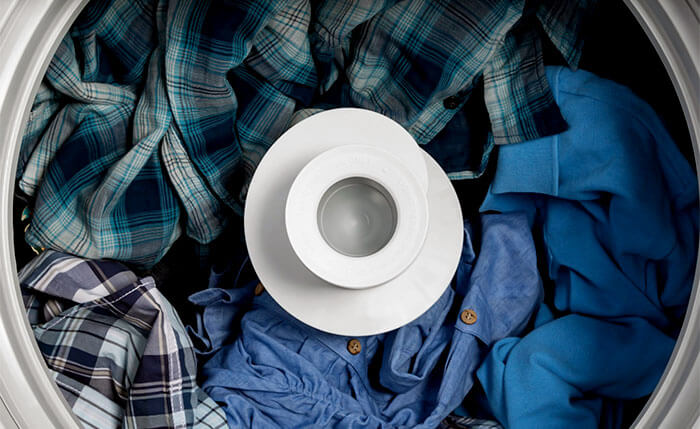
Do you own a GE top-load washer and are having problems getting it to spin? If so, you’re not alone! Many people have experienced this issue with their GE washers.
This post will provide detailed information on the possible causes of this problem and what you can do to fix it.
First, let’s take a look at some of the potential causes of spinning issues with your GE top-load washer:
Faulty lid switch: The lid switch is an important component in any washer, as it helps control when the drum turns by telling the machine when the lid is open or closed. A faulty lid switch may cause your machine to fail to spin correctly.
To check if this could be causing your issue, remove power from your unit and then inspect the lid switch for signs of damage or debris buildup. If necessary, replace it before attempting to use your washer again.
Broken drive belt: The drive belt connects the motor to the transmission so that both parts can turn at the same time. This lets the wheels spin in the right direction during a cycle. If this part becomes worn out or broken due to overuse, excessive wear, and tear, or age, then it can cause spinning problems with your GE top-load washer.
You’ll need to replace this part if there are any visible signs of damage, like tears or cracks, in order for it to work properly again.
Clogged pump filter: Over time, lint and other small pieces can build up in the pump filter, preventing water from draining properly. This makes the cycle incomplete, with only partial spins and a sudden stop in the middle of a wash cycle.
To fix this problem, just use a vacuum cleaner’s nozzle attachment to clean out all the junk that has built up inside. Make sure that no pieces are left behind that could block drainage in the future.
Malfunctioning timer switch: The timer controls how long each cycle runs and when it starts and stops.
However, if something goes wrong with its circuitry (like a short circuit), it’s likely that spinning won’t happen even if you press the start button multiple times because the signal isn’t being sent through the system correctly. This brings us back to our original question, “Why isn’t my GE top-load washer working normally?”
Replacing the whole timer assembly should fix most (if not all) problems caused by a broken timer knob and wheel combination device, so don’t wait to replace one if you’re in a similar situation right now. Once you’ve figured out what might be causing these problems with your GE top-load washer, there are a few things you can do to fix them yourself without taking apart any major parts inside, unless it’s absolutely necessary. If something looks suspiciously broken beyond repair, you should obviously call a professional right away.
GE Top-Load Washer Error Code List
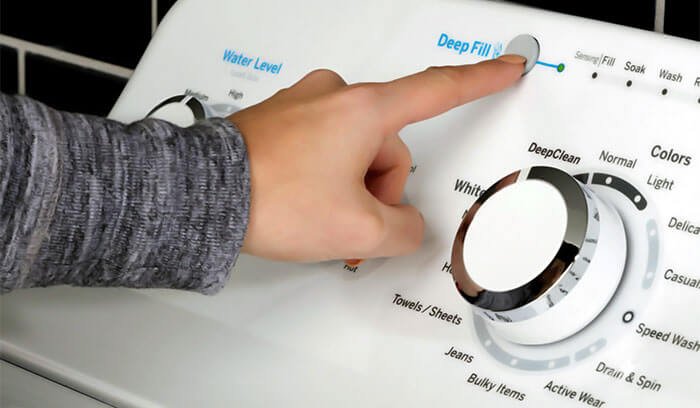
If you’re the proud owner of a GE top-load washer, then you know how convenient and efficient it can be. But even the best appliances can experience problems from time to time. If your GE top-load washer isn’t functioning properly, one of the first things you should do is check for error codes that may appear on its LED display panel.
Most modern washing machines show error codes in digital form. These codes show that problems need to be fixed by a qualified technician or service provider.
To help you figure out what might be wrong with your GE top-load washer, we’ve put together this list of error codes and what they mean:
FH: This code means that water is coming into the machine too quickly or that it is overflowing while it is working. Before you start your washing cycle again, check all of the hoses that are connected to the machine for kinks or clogs, and make sure they are securely fastened at both ends.
EI: This code means there is no power supply reaching the appliance; check if it has been unplugged from its outlet or if a fuse has blown in either the circuit breaker box servicing your home or apartment building.
IE: The IE code means that something might be blocking the drain hose coming out of the drum. Use a flashlight and gloves to look inside the drum and remove any debris that is blocking it. Then, operations can go back to normal.
LD: An LD error code usually indicates a problem related to overloading, which could have been caused by adding too many items into one wash load. Reduce the size so that it doesn’t go over the maximum capacity listed in the manufacturer’s user manual. Then, if you have time, you can start another cycle successfully.
Understanding what these error messages mean can help you find potential problems faster, saving you both time and money if you can fix them yourself instead of calling a pricey repairman who may charge extra labor fees without knowing the root cause, even though you might have been able to fix the real problem right away. by taking care of small repairs yourself when possible. such as unclogging drains and changing filters on a regular basis.
Users will be able to keep their machines running well for much longer, which should keep them from having to buy expensive new ones in the future.
About GE Washer Reset
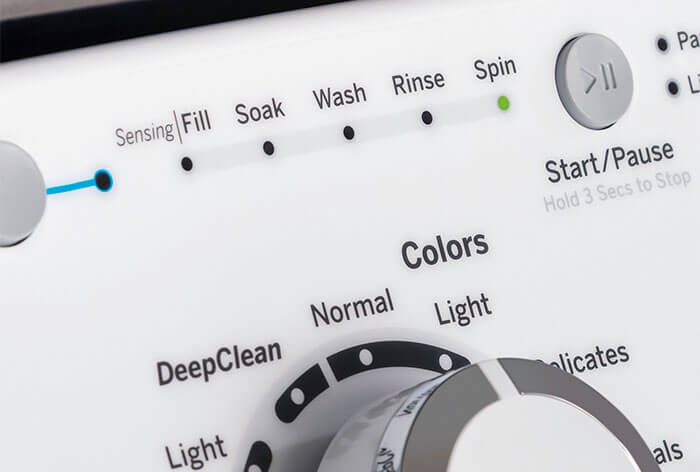
Does a GE Washer Have a Reset Button?
Nowadays, the majority of washers lack a physical reset button. They do, however, provide a reset option. Simply put, the rest feature fixes any communication issues between the control board and the cycle controls.
In reality, there is no reset button on the GE washer. But by pressing the “Cancel” button, anyone can remove the error message from both the cycle control and control board switch. After that, the cycle feature can be reset by pressing the “Pause” or “Stop” button.
How to reset the Hydrowave motor in a GE washer?
The majority of the drive system in GE washers equipped with Hydrowave wash technology is powered by the motor because they lack a transmission. Even though Hydrowave technology makes the washer work better overall, it can also put more stress on the motor, which can cause the washer to shut down when there is a problem with the motor.
Follow these steps to reset a GE washer with a Hydrowave:
- For a minute, unplug the washing machine.
- Lift and drop the lid six times over the course of 12 seconds while re-plugging the washer.
Note that:
- Within the first 30 seconds after turning on the washer’s power, you should begin opening and closing the lid.
- In order to break the lid’s magnetic connection, the lid must be raised at least two inches.
- Each time, the lid must be completely shut.
Now that the washer motor has been reset, a fresh cycle can be started.
GE washers can be reset using the timer control knob
- Turn off the washer’s circuit breaker or fuse, or unplug the washer.
- A clockwise rotation of the timer knob will return it to any setting other than the last cycle setting.
- Bring the power back.
Keep in mind that the washer needs to be powered off for two minutes. The washer must be reset and prepared to begin a fresh cycle as soon as the power goes back on.
GE washing machine reset via an electronic control panel or knob
- By unplugging it or turning off the washer’s circuit breaker or fuse, turn off the electricity to the washer.
- Before reconnecting the power, wait two minutes.
The washer should be reset when you start it. To finish the reset, you might need to click Cancel or choose the wash cycle.
GE Washer Troubleshooting Manual
If you’ve ever had a problem with your GE washing machine, chances are you’ve turned to the trusty troubleshooting manual. This helpful guide can help you fix the most common issues with these machines, saving you both time and money.
Any homeowner who owns a GE washer needs to have the GE Washer Troubleshooting Manual.
The manual covers a variety of topics related to troubleshooting your washer.
It starts with some general information about different GE washer models and how to use them correctly to avoid problems in the future.
Next, it talks about more specific things, like how to figure out what the problem is and what parts might need to be fixed or replaced.
Finally, it includes helpful tips on preventive maintenance that can help keep your washer running smoothly for years to come! If you use this GE washer troubleshooting manual the right way, it can help you figure out what might be wrong with your machine before it gets worse and costs you more money.
Conclusion
I hope that after reading the GE Washer Troubleshooting Guide, you can now repair your washer on your own.
Related Troubleshooting Guides:
